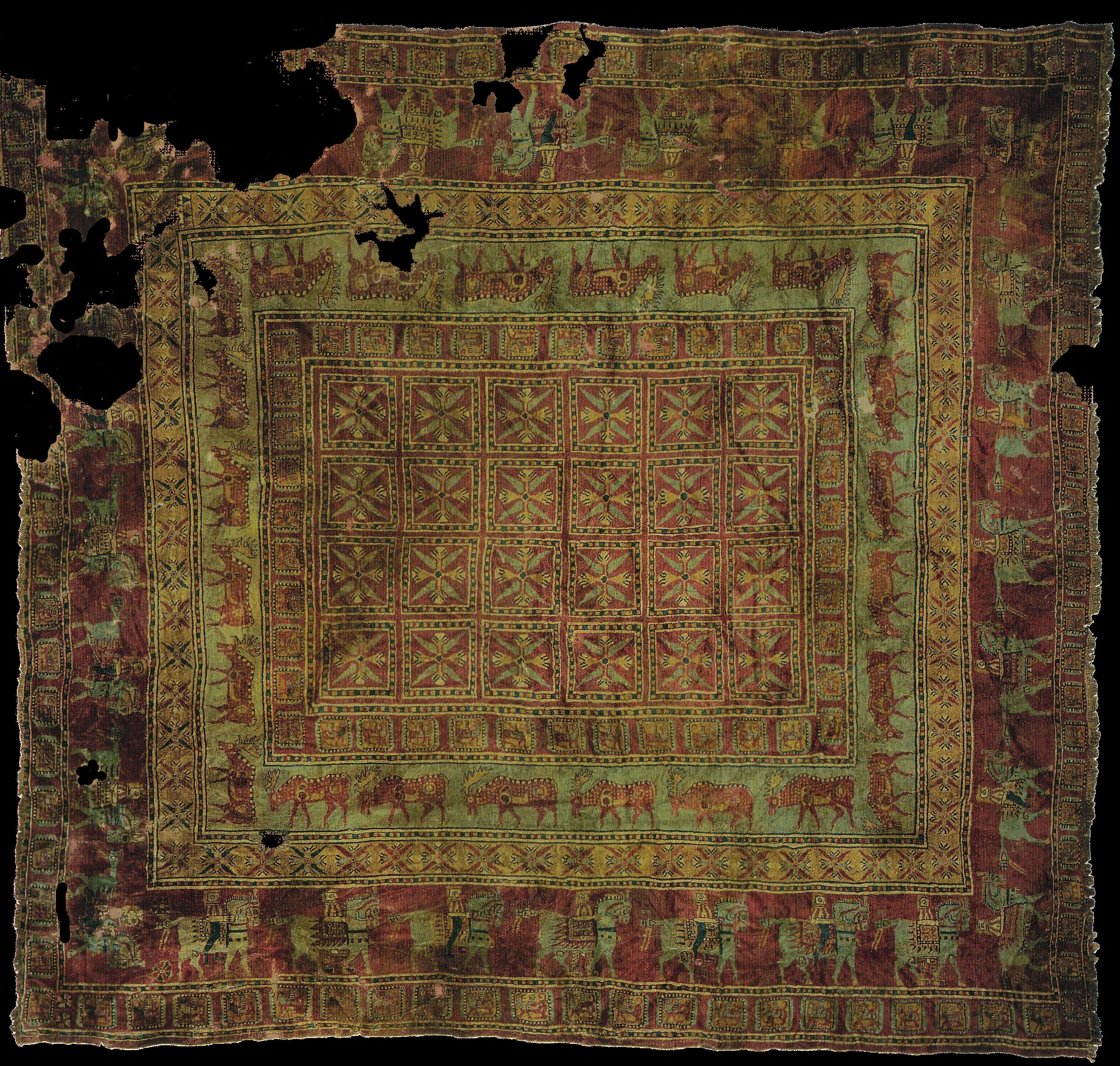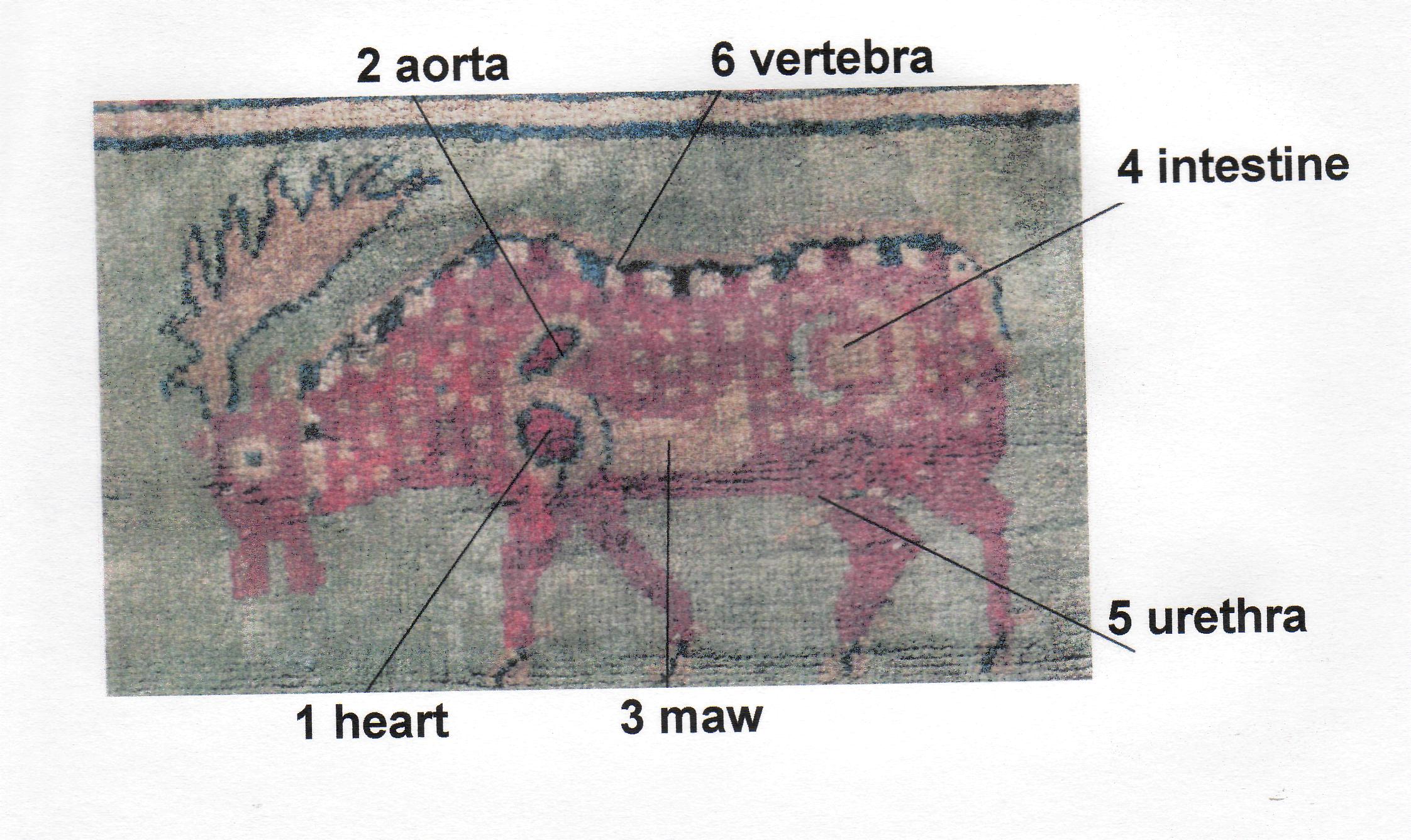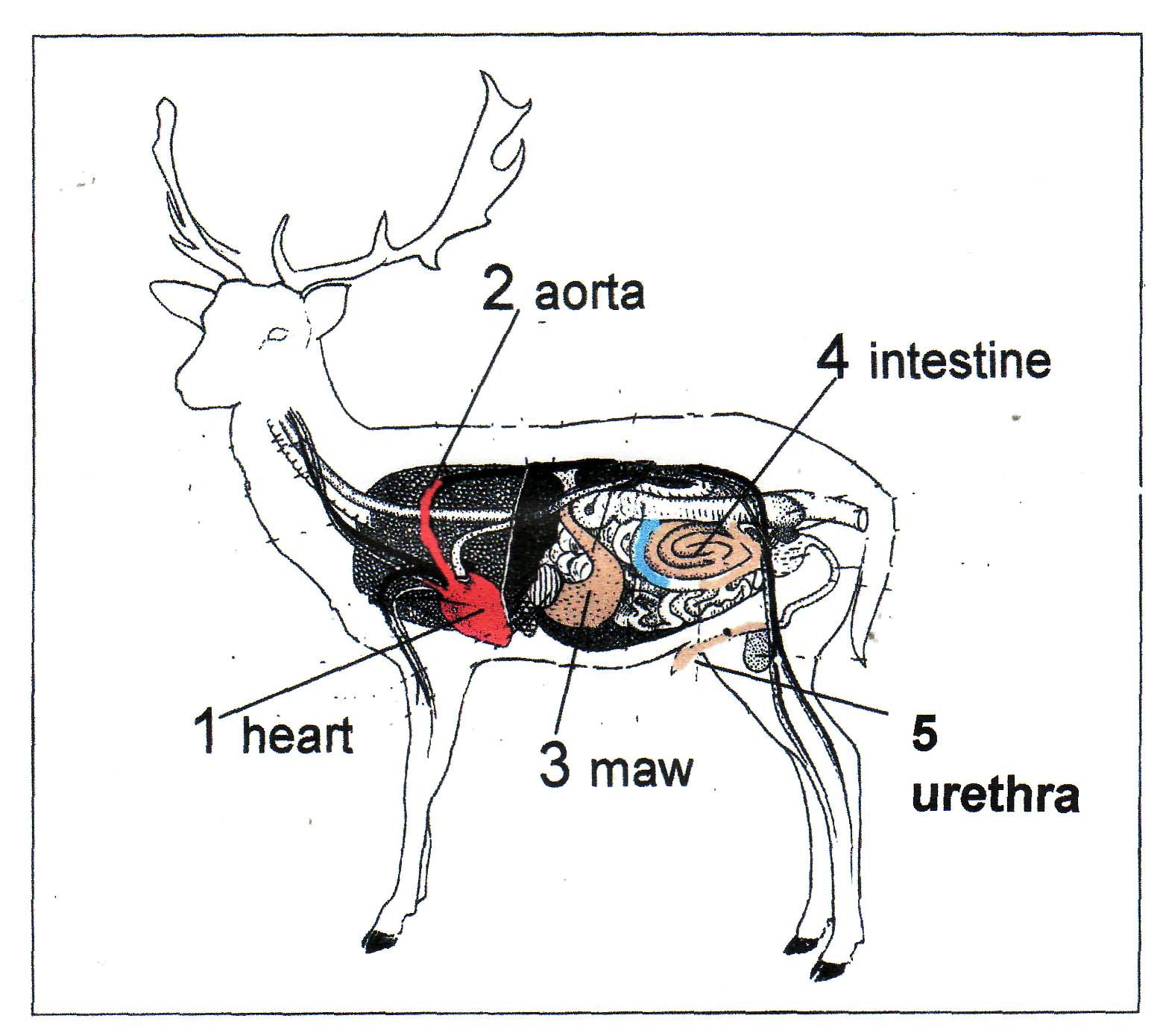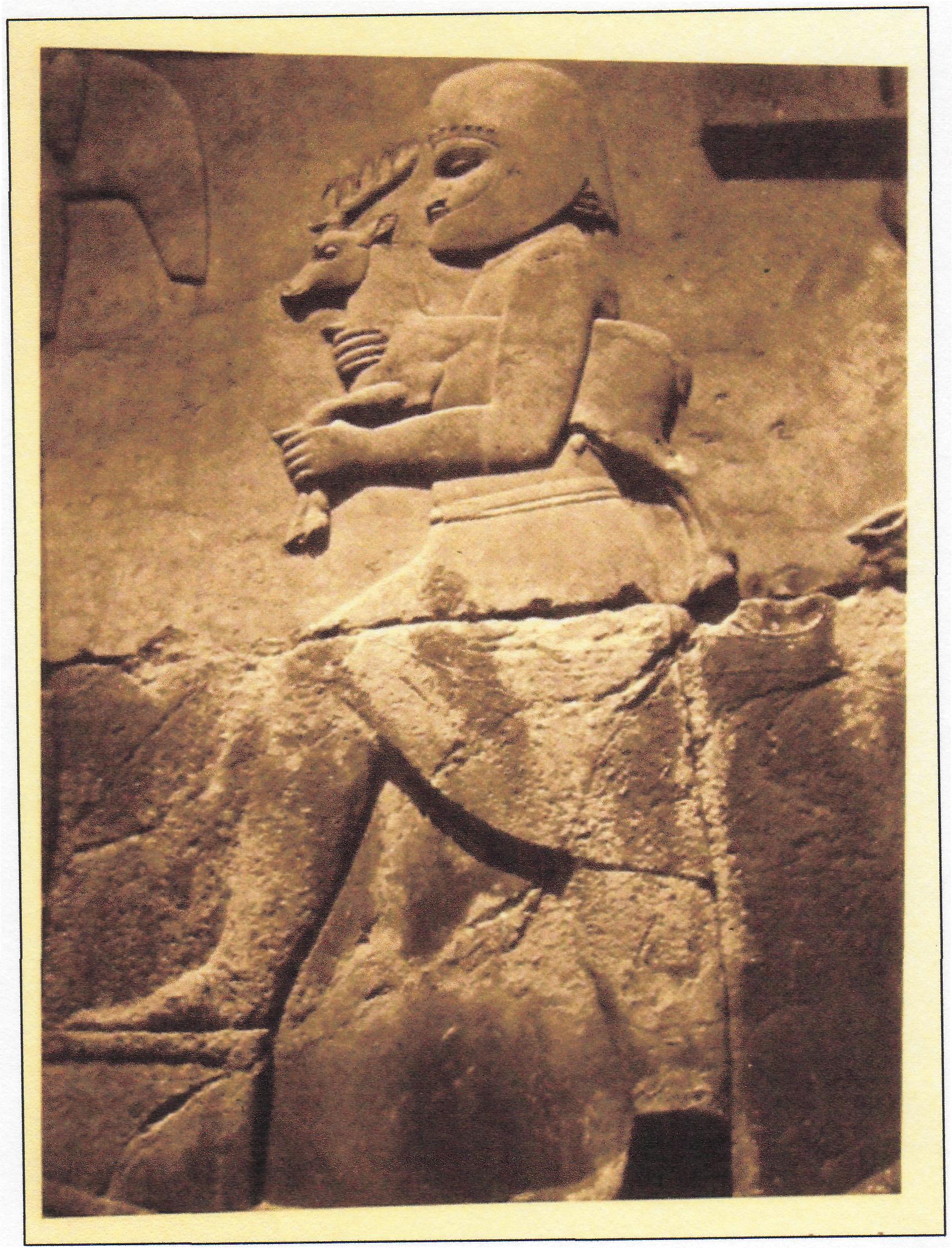www.w-ch-klose.de |
||||||||||||||||||
|
|
||||||||||||||||||
|
Naturwissenschaft, Kunst- und Kulturgeschichte |
|||||
|
Pazyryk Carpet. New insights. Christine Klose The Pazyryk Carpet (fig.1) has frequently been the object of thorough studies. It is the oldest known knotted carpet, preserved in a Scythe tomb (kurgan) from the 4th -3th century B.C. Valuable information is in the book of Sergey I. Rudenko (in English translation: “The Most Ancient Carpets and Textiles of the World”, Moskau 1968), and an article by Ludmilla Barkova (HALI, issue 107,1999, pp. 64-69): “The Pazyryk—Fifty Years on"). As is appears, no one so far has given notice to the fact, that the pattern on the coat of the 24 broad-antlered spotted fallow deers, forming a procession in the second outward wide border, has an anatomical meaning (fig.2). Lecturing on Oriental carpets in the city of Thun (Switzerland), I was puzzled by the remark of a medical doctor in the audience. He, a passionate hunter, said, that these extra figures are depicting the inwards and the vertebra of the deer, all parts in real positions with nearly clinical precision (fig.3): The most common species of a fallow deer in Asia nowadays is known as "Mesopotamian deer" [E. Ueckermann, Das Damwild, (Hamburg, Berlin, 1983) pp.14/15]. Ueckermann also mentions a stone relief (fig.4) from the palace of Dareios in Persepolis (p. 15) showing a feudal servant who offers such a deer for the king. One may think that deer were highly valuated; they may have been also connected with ritual procedures. Since Mesopotamia was part of Dareios' empire, one may think of similar rituals there. From Siberia, where Pazyryk is located, we have many representations of deer by Scythian craftsmen. But the character of the Pazyryk carpet is not Scythian. The experts suppose Mesopotamia as its origin. The clue for this supposition is the stony so called threshold carpet from Ninive, now exhibited in the British Museum. It has a very similar pattern as compared with the field of the Pazyryk carpet. Therefore, the name "Mesopotamian deer" and the relief in Persepolis are additional indications for Mesopotamia as origin of the Pazyryk carpet.
|
|||||



